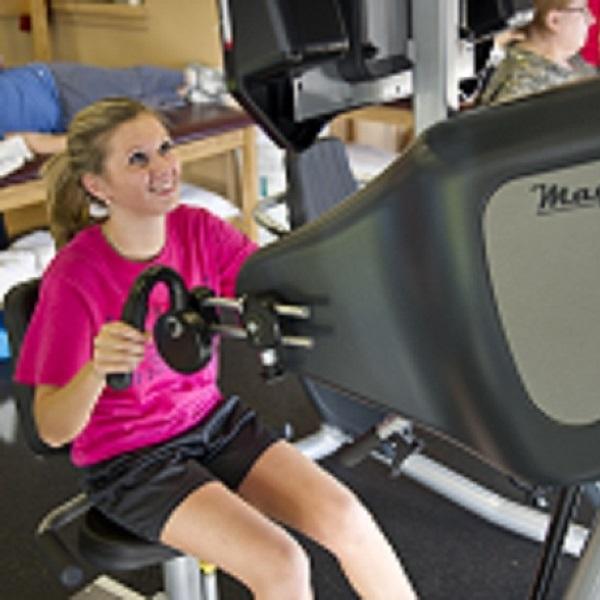
We’ve all felt it . . . that “thump-thump” in our chest during exercise. Sometimes, it’s a little flutter. Other times, it can feel like our heart is going to jump out of our chest.
While most know it’s important to monitor heart rate during exercise, many don’t know why.
“Monitoring your heart allows you to measure whether you’re working out too much, or not enough,” says Katie Varnado, Athletic Training Supervisor with ATI Sports Medicine. “One needs to hit an intensity level that will provide optimal health benefits, while remaining at a safe level.”
Most healthy people should have a Target Heart Rate zone from 50 – 75% of your maximum heart rate, or within the Moderate Exercise Intensity zone. If you’re below this level, you may not be working out enough. On the flip side, if you’re above this level, you may be straining yourself.
Katie offers these steps in calculating your appropriate maximum heart rate:
- Step 1: Subtract your age from 220 to get your average maximum heart rate in beats per minute.
Example: 220 – 42 years old = 178 beats per minute/Maximum Heart Rate. - Step 2: Multiply your Maximum Heart Rate by .5 to determine the bottom 50% of your Target Heart Rate zone. Example: 178 x .5 = 89 beats per minute.
- Step 3: Multiply your Maximum Heart Rate by .75 to determine the top 75% of your Target Heart Rate zone. Example: 178 x .75 = 134 beats per minute.
- Step 4: Once you have calculated your Maximum Heart Rate, use it to monitor the intensity level of your exercise. To measure your heart rate, place your index and middle fingers over your carotid artery on either side of your neck, or radial pulse on your wrist at the base of your palm, and feel your pulse. Count your heart beats for 10 seconds, then multiply that number by six. This determines your beats per minute while exercising.
For those just beginning an exercise program, Varnado recommends aiming for the bottom 50% of your Target Heart Rate zone for the first few weeks. Then, slowly progress to the middle and upper levels over the next six months.
Varnado reminds everyone that your Target Heart Rate should be used a guideline for finding exercise intensity. Anyone beginning an exercise program should ALWAYS consult with their physician first.
If you’re still unsure about your Target Heart Rate, or have more questions, let ATI Sports Medicine help! Visit Ask the Athletic Trainer and submit your question.
For more information on Target Heart Rate and exercise, visit Target Heart Rate and Exercise.
